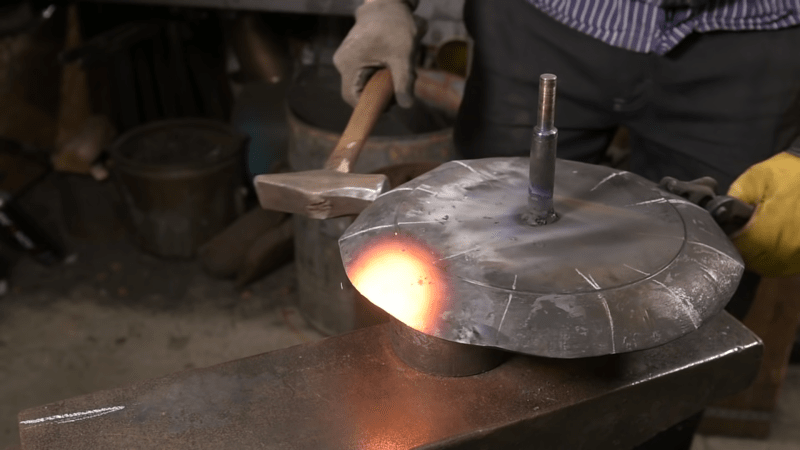Cookware isn’t something we typically build ourselves; you’d want a well-equipped metal shop to do the job and do it right. [Torbjörn Åhman] has just that, however, and set about forging a stout-looking skillet from scratch.
The build starts with a round disc of steel serving as a blank for the project. The blank is spun up and the outer perimeter ground down thinner with an angle grinder in what looks like a moderately sketchy operation. A forge is then used to heat the blank so that it can be shaped into a pan using a hammer. Slowly, as the metal is beaten one way and then t’other, the skillet begins to form. A belt sander takes off high points on the outside, and a torch is then used to square up the base of the pan so it sits nicely. Finally a handle attached with some stout rivets, and the newly formed piece of cookware gets a seasoning with sunflower oil.
The project shows just how many special skills are required to make even simple cookware by hand. It’s nice to see some keeping the old methods alive, too. Video after the break.
















“A forge is then used to heat the blank so that it can be shaped into a pan using a hammer.”
I think [Jenny List] will tell you that a “hearth” is used to heat up the blank. Fortunately, a hearth is the “heart” of a forge!
B^)
So in essence, “forge” perfectly communicates the point.
wait,no egg?
He has a video frying meatballs in that pan: https://www.youtube.com/watch?v=zuubfjUoG1k
“This is your brain on drugs.”
normally rivets are used rather than bolts
Indeed, if you’ve got the tools to forge the thing in the first place, you’ve got everything you need to hot rivet the handle on, which would make a better joint than bolts.
The look like rivets to me. https://youtu.be/36BqMeeRpgM?t=913
The screws were just to keep it aligned for the first pair of rivits.
One can though go the more fiddly route of not having any assistance holding the two pieces together as one rivits it, but a screw and nut makes for a rather useful temporary clamping tool.
Even better to make the handle one piece with the pan.
I love my solidtechniks pan – handle is one piece, nothing to get loose or break or collect food or water (=rust).
But this is beautiful workmanship.
Once I get my forge working, I’ll attempt this. Seems too cool not to do it. Also, I want to make a pan with a very thick bottom to retain as much eat as possible. Seems like something that could work.